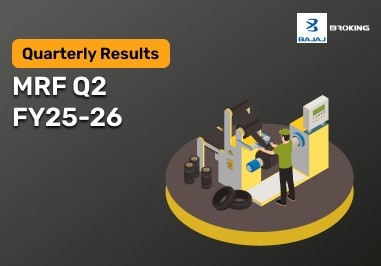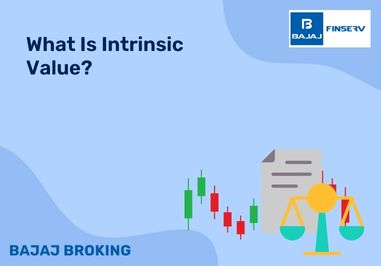Recurring deposits (RDs) and mutual funds are popular investment options in India. RDs offer fixed returns with minimal risk, making them ideal for conservative investors. In contrast, mutual funds provide market-linked returns, allowing investors to grow wealth over time.
When comparing RD vs mutual fund, liquidity is a key difference. RDs have fixed tenures, with penalties for early withdrawal. Mutual funds, however, offer greater flexibility, allowing withdrawals at the prevailing Net Asset Value (NAV).
Both options serve different financial goals. RDs are suited for those seeking RD benefits like stability and disciplined savings. Mutual funds, on the other hand, are better for wealth creation. Understanding the recurring deposit meaning and mutual fund structure helps in making the right investment choice.
Difference between recurring deposits and mutual funds
Factor
| Recurring Deposits
| Mutual Funds
|
Investment Purpose
| Primarily for savings and fixed returns
| Wealth creation and potential growth
|
Returns
| Fixed interest rates
| Market-linked, varying by performance
|
Risk
| Low risk
| Varies from low to high based on type
|
Liquidity
| Less liquid, with penalties for premature withdrawal
| More liquid, with redemption at NAV; some funds may have exit loads
|
Investment Amount
| Requires regular deposits (mostly monthly)
| Flexible investment amounts
|
Recurring deposits and mutual funds: Key differences summarised
The mutual fund vs RD comparison highlights key differences in risk, returns, and liquidity. RDs provide stable returns, while mutual funds offer market-linked growth. Choosing between them depends on financial goals and risk appetite.
Frequency of investment
Recurring deposits follow a fixed schedule, requiring a set deposit each month for a chosen tenure. This disciplined approach ensures regular savings and is ideal for those seeking RD benefits such as stability and low risk. The fixed nature of deposits makes it predictable and easy to plan.
In contrast, mutual funds offer flexible investment frequencies. Investors can opt for a Systematic Investment Plan (SIP) on a weekly, monthly, or quarterly basis. This flexibility makes mutual fund vs RD a key consideration, as mutual funds allow investors to tailor their investment schedules.
Returns
A recurring deposit meaning includes guaranteed, fixed interest returns. The rate is predetermined and remains unchanged throughout the tenure, making RDs a secure option for risk-averse investors. However, returns are generally lower compared to market-linked investments.
In contrast, mutual funds offer returns based on market performance. Since they invest in equities, bonds, or debt instruments, the returns are variable. While mutual funds can generate higher returns over time, they also carry some level of risk, making RD vs mutual fund an important choice for investors.
Investment schemes
Recurring deposits are straightforward, offering limited scheme variations. Banks and financial institutions provide different tenure options, ranging from six months to ten years. The primary focus is capital protection with steady interest, making RD benefits appealing to conservative investors.
Mutual funds, however, offer diverse schemes such as equity, debt, hybrid, and index funds. Investors can select schemes based on their financial goals and risk appetite. The variety of investment avenues makes mutual fund vs RD a key factor in financial planning.
Market linked
Recurring deposits are not linked to market fluctuations, ensuring stable returns. Regardless of economic conditions, investors receive their fixed interest, making RD benefits ideal for those seeking security. This feature makes RDs suitable for short-term financial goals.
On the other hand, mutual funds are market-linked and fluctuate based on the performance of stocks, bonds, and other securities. This characteristic means higher potential returns but also involves risks. Understanding this distinction in RD vs mutual fund helps investors decide between stability and growth.
What are Mutual Funds?
A mutual fund is an investment vehicle that pools money from multiple investors and allocates it across various asset classes such as equities, debt, and money market instruments. The fund is professionally managed by a fund manager who makes investment decisions to maximise returns. Mutual funds are regulated by SEBI, ensuring investor protection and transparency.
Investors can choose between lump-sum investments or Systematic Investment Plans (SIPs), where money is invested at regular intervals. Compared to RDs, mutual funds offer market-linked returns, making RD vs mutual fund a key consideration. While mutual funds involve risk, they provide higher growth potential than fixed-income instruments.
Key Features of Mutual Funds
Diversification:
Investments are spread across various sectors and asset classes, reducing risk.
Market-linked Returns:
Returns vary based on market performance, unlike fixed-return instruments.
Professional Management:
A qualified fund manager makes investment decisions on behalf of investors.
Liquidity:
Investors can redeem units anytime, subject to exit loads in certain funds.
Flexibility:
Various schemes cater to different risk appetites and financial goals.
Regulated by SEBI:
Ensures investor safety and transparency in operations.
SIP Option:
Enables disciplined investment with small amounts at regular intervals.
Tax Benefits:
Equity-linked schemes offer tax-saving options under Section 80C of the Income Tax Act.
What are Recurring Deposits?
A recurring deposit meaning refers to a savings scheme where a fixed amount is deposited monthly for a predetermined tenure. RDs offer RD benefits such as guaranteed returns and low risk, making them suitable for conservative investors. Unlike mutual funds, RDs provide fixed interest, making mutual fund vs RD a common comparison for those seeking stable investments.
Key Features of Recurring Deposits
Guaranteed Returns:
RDs provide fixed interest rates, ensuring steady and predictable earnings.
Low Risk:
Unlike market-linked investments, RDs are safe as they are not affected by market fluctuations.
Flexible Tenure:
Investors can choose a tenure ranging from six months to 10 years based on their financial goals.
Regular Savings Habit:
Encourages disciplined investing by requiring fixed monthly deposits.
Fixed Interest Rate:
The interest rate is pre-determined and remains unchanged throughout the tenure.
Bank and Post Office Availability:
RDs can be opened with banks or post offices, making them widely accessible.
Premature Withdrawal Option:
Some banks allow early withdrawal but with a penalty.
No Market Risk:
Since RDs do not depend on market performance, investors are protected from volatility.
Suitable for Conservative Investors:
Best for those seeking secure, long-term savings without risk exposure.
Taxation:
Interest earned on RDs is taxable under income tax rules.
Recurring Deposit or Mutual Fund: Which is Better?
Choosing between a recurring deposit or mutual fund depends on financial goals, risk appetite, and investment horizon. RDs are ideal for those seeking RD benefits, such as capital safety and assured returns. They work well for conservative investors who want a structured savings plan without market risks.
On the other hand, mutual funds offer market-linked growth, making them suitable for investors willing to take some risk. The mutual fund vs RD debate centres around returns—while RDs provide fixed interest, mutual funds have the potential for higher returns, depending on market performance.
For short-term, low-risk savings, RDs are a better choice. However, for long-term wealth creation, mutual funds outperform RDs. Investors can choose SIPs to invest small amounts regularly and benefit from rupee cost averaging.
Ultimately, both instruments serve different purposes. If capital protection is the goal, RDs are preferable. If wealth creation is the priority, mutual funds are the better option.
Conclusion
The RD vs mutual fund comparison highlights two distinct investment paths. RDs focus on security and guaranteed earnings, making them a reliable savings tool.
Mutual funds, on the other hand, offer market-linked returns, making them ideal for long-term wealth creation. They involve risk but provide greater potential for financial growth.
For conservative investors, RDs offer stability, while mutual funds suit those seeking higher returns. Investment decisions should align with risk tolerance and financial goals.
Ultimately, both instruments serve unique needs. The right choice depends on an investor’s preference for security or growth.















